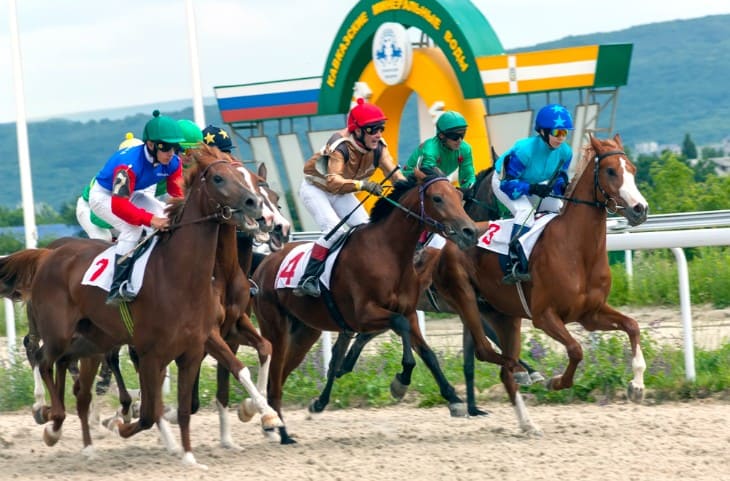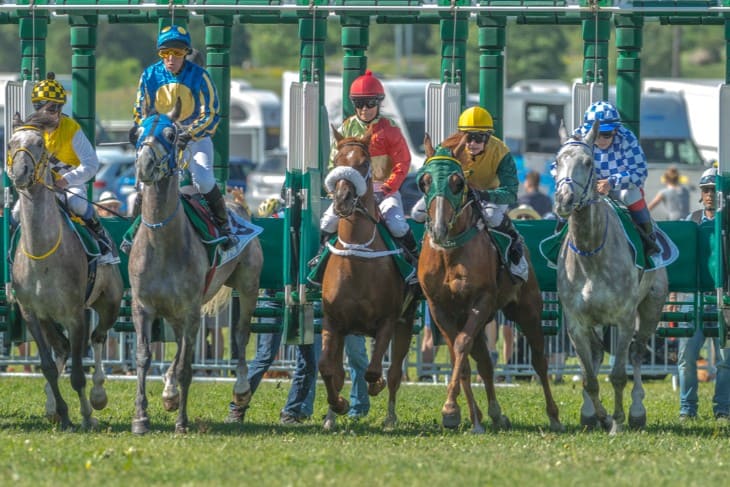- Understanding In-Play Betting: Basics and Strategies
- The Role of Technology in Modern Horse Racing
- Analyzing Odds: How Bookmakers Set Prices
- The Psychology of In-Play Betting
- Key Horse Racing Events and Their Betting Implications
- The Impact of In-Play Betting on Horse Racing Economy
- Comparing In-Play Betting with Traditional Betting Methods
- The Future of In-Play Betting in Horse Racing
- Conclusion
Understanding In-Play Betting: Basics and Strategies
In-play betting, also known as live betting, has introduced a dynamic aspect to horse race betting. This form of betting allows punters to place bets on races as they are happening, offering the chance to respond to live events and fluctuating odds. The key to mastering in-play betting lies in understanding its fundamentals and developing effective strategies.
The basics of in-play betting involve keeping an eye on changing odds as the race progresses. Odds fluctuate based on the performance of the horses, track conditions, and other in-race events. Successful in-play betting requires a blend of quick decision-making and an understanding of the sport. Bettors need to be well-informed about the horses, jockeys, and track conditions, as these factors play a crucial role in determining the outcome of the race.
Developing strategies for in-play betting involves:
- Research: Understanding the history and form of the horses and jockeys.
- Adaptability: Being flexible in response to live race conditions and changing odds.
- Discipline: Setting limits on bets to manage risks effectively.
- Live Streaming: Utilising live streams of races to make informed decisions.
These strategies, coupled with a keen sense of observation and experience, can significantly enhance the in-play betting experience, making it an exhilarating aspect of modern horse race betting.
The Role of Technology in Modern Horse Racing
The incorporation of advanced technology has been pivotal in transforming modern horse racing and In-Play Match Bets. Technological advancements have not only enhanced the viewing experience but have also improved the integrity and efficiency of betting practices. One of the most significant developments is the use of high-speed cameras and sophisticated tracking systems. These technologies provide real-time data and analytics, crucial for in-play betting where every second counts. High-speed cameras offer a detailed view of the race, helping in accurate decision-making for both officials and bettors.
Additionally, technology has revolutionised the way bettors interact with horse racing. Online betting platforms, mobile apps, and live streaming services have made horse racing more accessible than ever. Bettors can now place bets from anywhere in the world, monitor live races, and receive instant updates, all contributing to the popularity and growth of in-play betting.
Key Technological Advancements in Horse Racing:
- Real-time tracking systems: Provide detailed data on horse positions and speeds.
- Mobile betting apps: Allow convenient access to betting platforms and live race updates.
- Advanced security measures: Ensure safe and secure transactions for online betting.
- Virtual reality (VR) and Augmented reality (AR): Enhance the viewing experience for remote audiences.
Analyzing Odds: How Bookmakers Set Prices
The setting of odds in horse racing, particularly for In-Play Match Bets, is a complex process that involves a combination of statistical analysis, knowledge of the sport, and an understanding of the betting market. Bookmakers use a variety of methods to set initial odds before a race. These include evaluating the horses' past performances, their training regimes, jockey expertise, and track conditions. Statistical models play a key role, using historical data to predict the outcomes of races.
During in-play betting, odds are constantly updated to reflect the changing circumstances of the race. Bookmakers rely on sophisticated software that analyses live data feeds, considering factors like the current position of the horses, their pace, and any unexpected events occurring during the race. This dynamic pricing of odds makes in-play betting particularly challenging and exciting for bettors.
To understand odds in horse racing, it is essential to grasp:
- The influence of external factors: Weather conditions, track surface, and horse health.
- The role of public opinion: How betting patterns of the public affect odds setting.
- Real-time data analysis: The use of live data to adjust odds during a race.
- Risk management strategies: Employed by bookmakers to balance books and mitigate losses.

The Psychology of In-Play Betting
In-play betting, particularly in the context of horse racing and In-Play Match Bets, has a unique psychological component that distinguishes it from traditional forms of betting. The immediacy and dynamic nature of in-play betting can elicit a range of emotions from excitement and thrill to anxiety and stress. Bettors are drawn to the immediate feedback loop of in-play betting, where the outcomes of their decisions are realised swiftly. This immediate gratification can be both alluring and dangerous, as it may lead to impulsive betting decisions.
Understanding the psychology behind in-play betting is crucial for responsible gambling. The fast-paced environment can sometimes impair judgement, leading bettors to chase losses or bet beyond their means. Self-awareness and emotional control are key to successful in-play betting. Bettors need to be mindful of their emotional responses and have strategies to manage them. Setting limits, taking breaks, and maintaining a disciplined approach are essential practices to ensure that betting remains a form of entertainment rather than a problem.
Key Horse Racing Events and Their Betting Implications
Horse racing boasts several key events that attract significant attention from bettors, especially for In-Play Match Bets. These prestigious events not only showcase the best of the sport but also present lucrative opportunities for in-play betting. The Grand National, Royal Ascot, and Cheltenham Festival in the UK are prime examples, each with their unique characteristics and betting implications.
The Grand National, known for its challenging course, offers a variety of betting opportunities due to its unpredictable nature. In contrast, Royal Ascot, a highlight of the social calendar, attracts the finest horses, jockeys, and trainers, making it a more strategic betting event. The Cheltenham Festival is renowned for its atmosphere and competitive races, requiring bettors to have a deep understanding of horse racing dynamics.
These events are pivotal in the horse racing calendar due to:
- High stakes and prestige: Attracting top talent and significant betting interest.
- Variety of races: Offering diverse betting opportunities for both novices and experienced bettors.
- Extensive media coverage: Facilitating greater accessibility and engagement for remote bettors.
- Impact on betting markets: Influencing betting trends and odds in the wider horse racing scene.
The Impact of In-Play Betting on Horse Racing Economy
The introduction and growth of In-Play Match Bets have had a profound impact on the horse racing economy. In-play betting has become a significant revenue stream for the horse racing industry, attracting a new demographic of bettors and increasing overall betting volume. This influx of capital has benefits that extend beyond the betting operators, impacting the entire ecosystem of the sport, including racecourses, horse owners, and trainers. Increased betting revenues often translate into higher prize money for races, which in turn can attract higher quality horses and create more competitive and exciting racing events.
However, the impact of in-play betting on the horse racing economy is not without its challenges. Concerns have been raised about the potential for increased gambling addiction and the need for robust responsible gambling measures. Additionally, the increased financial stakes can lead to more significant scrutiny and pressure on all parties involved in horse racing, from jockeys and trainers to race organisers. Balancing the economic benefits with ethical and responsible practices is key to the sustainable growth of in-play betting in horse racing.

Comparing In-Play Betting with Traditional Betting Methods
The comparison between In-Play Match Bets and traditional betting methods highlights the evolution of the betting landscape in horse racing. Traditional betting, often done before the start of a race, involves analysing past performance, track conditions, and other static factors. In contrast, in-play betting adds a dynamic component, allowing bettors to engage with the race as it unfolds. This real-time aspect offers a different set of challenges and opportunities compared to traditional betting.
Key differences between in-play and traditional betting include:
- Timing of Bets: In-play betting allows for wagers during the race, while traditional betting closes at race start.
- Information Access: In-play bettors rely on live data and must quickly interpret this information, whereas traditional betting is based on pre-race analysis.
- Risk and Reward: In-play betting can offer higher rewards due to changing odds but also comes with higher risk due to its unpredictable nature.
- Engagement Level: In-play betting requires continuous engagement with the race, offering a more immersive experience.
The Future of In-Play Betting in Horse Racing
The future of In-Play Match Bets in horse racing appears to be on a trajectory of continued growth and innovation. As technology advances, so do the possibilities for more sophisticated and user-friendly betting platforms. This could include enhanced mobile applications, more accurate real-time data, and even the integration of artificial intelligence to provide betting insights. The potential for virtual and augmented reality technologies to enrich the in-play betting experience also presents exciting opportunities.
Future prospects for in-play betting in horse racing are likely to focus on:
- Technological advancements: Leveraging new technologies for a more immersive and informed betting experience.
- Regulatory developments: Ensuring that the growth of in-play betting aligns with responsible gambling practices and regulatory frameworks.
- Market expansion: Exploring new markets and demographics, potentially broadening the appeal of horse racing betting.
- Enhanced user experience: Creating more intuitive and engaging betting platforms to attract and retain bettors.
The evolution of in-play betting is set to shape the landscape of horse racing betting, offering both challenges and opportunities for stakeholders in this dynamic industry.
Conclusion
In conclusion, the world of In-Play Match Bets in horse racing is one that is constantly evolving, driven by technological advancements, regulatory changes, and the shifting preferences of bettors. This dynamic form of betting has not only added a new dimension to the traditional horse racing experience but has also expanded the sport's appeal to a broader audience.
For more information:








